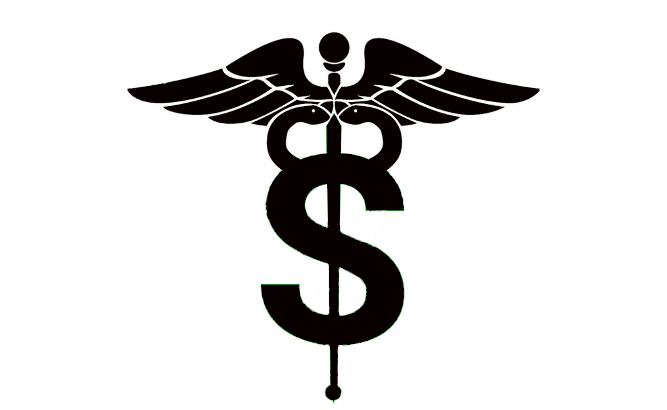2023-01-03
From Her View in Knoxville, the Health System Is ‘Not Designed for Poor People’
Monica Reed, 60, Knoxville, Tenn.
Approximate Medical Debt: $10,000
Medical Issue: Cancer
What Happened: Monica Reed considers herself luckier than most. Born in Knoxville and raised by a single mother, Reed became the first in her family to own a home, a small house built after the city demolished The Bottom, a once thriving Black neighborhood that was systematically wiped out in a midcentury urban renewal campaign. For the past 15 years, Reed has worked for a faith-based nonprofit that assists low-income residents of Knoxville.
“It hasn’t always been easy,” Reed said. She raised her son by herself. And though she’s always worked, her modest salary made saving difficult. “I just tried to live a frugal kind of life,” she said. “And by the grace of God, I didn’t become homeless.”
She couldn’t escape medical debt, though. Diagnosed with cancer five years ago, Reed underwent surgery and chemotherapy. Although she had health insurance through work, she was left with close to $10,000 in medical bills she couldn’t pay.
What’s Broken: In and around Knoxville, residents of predominantly Black neighborhoods are more than twice as likely as those in largely white neighborhoods to owe money for medical bills, Urban Institute credit bureau data shows. That is one of the widest racial disparities in the country.
Health care debt in the U.S. now affects more than 100 million people, according to a nationwide KFF poll conducted for this project. The toll has been especially high on Black communities: Fifty-six percent of Black adults owe money for a medical or dental bill, compared with 37% of white adults.
The explanation for that startling disparity is deeply rooted. Decades of discrimination in housing, employment, and health care blocked generations of Black families from building wealth — savings and assets that are increasingly critical to accessing America’s high-priced medical system.
Against that backdrop, patients suffer. People with debt avoid seeking care and become sicker with treatable chronic conditions like diabetes or multiple sclerosis. Worse still, hospitals and doctors sometimes won’t see patients with medical debt — even those in the middle of treatment.
Nationwide, Black adults who have had health care debt are twice as likely as white adults with such debt to say they’ve been denied care because they owe money, the KFF poll found. Many Black Americans also ration their care out of fear of cost.
If Black patients go into debt, they face yet another challenge: a medical debt collection industry that targets Black debtors more aggressively than their white counterparts, particularly for smaller debts.
What’s Left: Reed has been pursued by debt collectors and even taken to court. That has forced Reed to make difficult choices. “There’s always a sacrifice,” she said. “You just do without some things to pay for other things.”
Reed said she cut back on trips to the grocery store: “I don’t buy a lot of food. Just plain and simple.”
She has adjusted, she said. “You just do what you have to do.” What angers Reed, though, is how she’s been treated by the cancer center where she goes for periodic checkups to make sure the cancer remains in remission. When she recently tried to make an appointment, a financial counselor told her she couldn’t schedule it until she made a plan to pay her bills.
“I was so upset, I didn’t even find out how much I owed,” Reed said. “I mean, I wasn’t calling about a little toothache. This is something that affects someone’s life.”
Reed said she tries to stay upbeat. “I don’t sweat the small stuff,” she said. “What am I going to do against this hospital?”
But, she said, she has realized one thing about the nation’s health care system: “It’s not designed for poor people.”
About This Project
“Diagnosis: Debt” is a reporting partnership between KHN and NPR exploring the scale, impact, and causes of medical debt in America.
The series draws on the “KFF Health Care Debt Survey,” a poll designed and analyzed by public opinion researchers at KFF in collaboration with KHN journalists and editors. The survey was conducted Feb. 25 through March 20, 2022, online and via telephone, in English and Spanish, among a nationally representative sample of 2,375 U.S. adults, including 1,292 adults with current health care debt and 382 adults who had health care debt in the past five years. The margin of sampling error is plus or minus 3 percentage points for the full sample and 3 percentage points for those with current debt. For results based on subgroups, the margin of sampling error may be higher.
Additional research was conducted by the Urban Institute, which analyzed credit bureau and other demographic data on poverty, race, and health status to explore where medical debt is concentrated in the U.S. and what factors are associated with high debt levels.
The JPMorgan Chase Institute analyzed records from a sampling of Chase credit card holders to look at how customers’ balances may be affected by major medical expenses.
Reporters from KHN and NPR also conducted hundreds of interviews with patients across the country; spoke with physicians, health industry leaders, consumer advocates, debt lawyers, and researchers; and reviewed scores of studies and surveys about medical debt.
KHN (Kaiser Health News) is a national newsroom that produces in-depth journalism about health issues. Together with Policy Analysis and Polling, KHN is one of the three major operating programs at KFF (Kaiser Family Foundation). KFF is an endowed nonprofit organization providing information on health issues to the nation.

